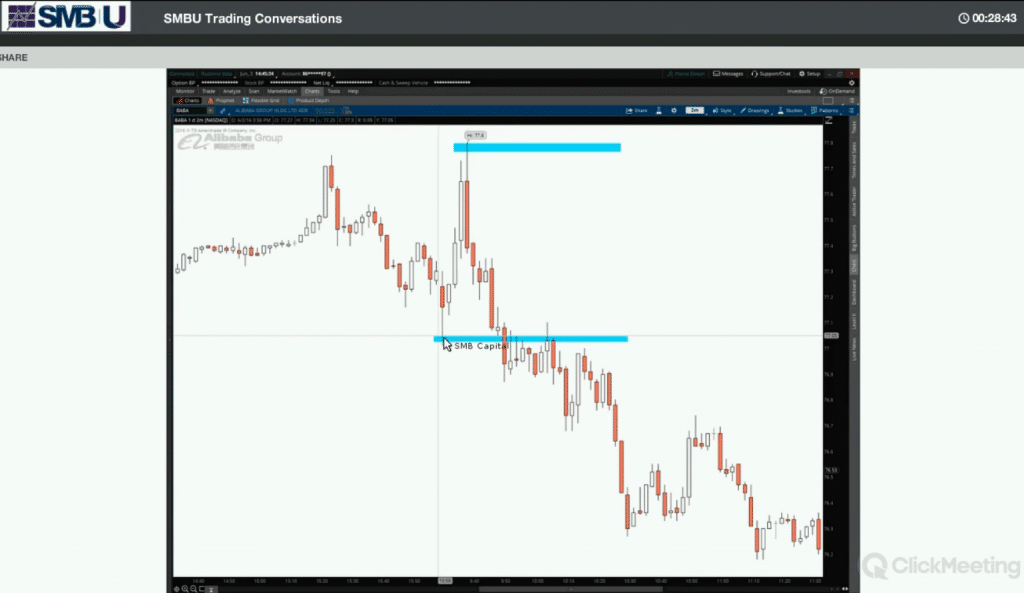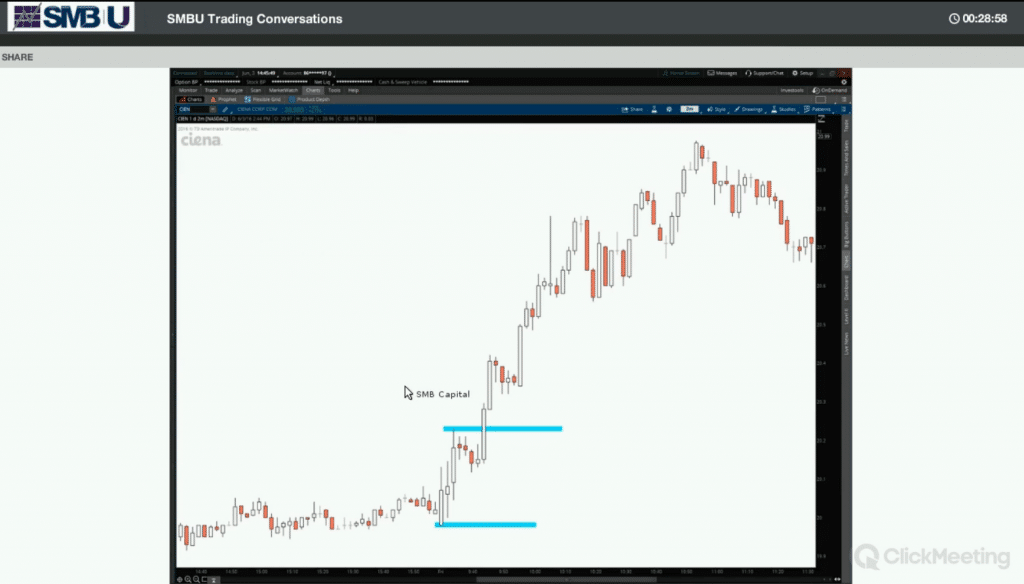Last Friday, during our weekly Trading Conversations webinar, we had a lot of great questions from our community – like we do most weeks! One question was about analyzing stocks right around the open, from the first minute to the first hour or so of trade.
Keeping with the live and interactive spirit of Trading Conversations, I asked users to give me a ticker or two and I would display how I analyze them around the open. The group chimed in with $BABA and $CIEN. The concept I taught was one of quickly framing the intraday context of a stock with a tool called the “Opening Swing”.
Let’s jump into the details. I define the Opening Swing as the first major swing high and swing low created by market participants after the open. This can be on whatever timeframe you operate in. For my examples, I used a 3min chart. It’s a measure of the first “tell” of how strong a wave of buyers are, and a wave of sellers are. Mark these on your chart as the Opening Swing High, and Opening Swing Low. We’ll use these references going forward.

Once we see the two swings, we define the range from the swing low to the swing high as the Opening Swing. We can now use this as a contextual reference to gauge trading in relation to the Opening Swing going forward.
Let’s look at the two examples:
Example 1: $BABA
This was a really good example of using the Opening Swing as a reference to frame what’s unfolding on the day. As you can see from the screenshot from the webinar, I highlighted the Opening Swing High and Low with the blue rectangles. Then what do we see? We see price get below the Opening Swing Low, and sellers defend that area on retests. This is a nice heads up that short term sellers are currently in control and I would be looking for short only trades until this situation changed.
Example 2: $CIEN
This stock provided a different example for us. Shown in the screenshot below, the Opening Swing was put in place, and buyers ripped higher through the Opening Swing High. This is a situation where I would not be looking to fade this move higher due to this early strength in the stock.
Keep in mind that these two examples were pulled from the same trading day. One was a good short opportunity, one a good long. Using the Opening Swing can help you improve your trading by adding this simple, early reference to help gauge the strength of buyers vs sellers.
Trade Well,
Merritt
* no relevant positions


